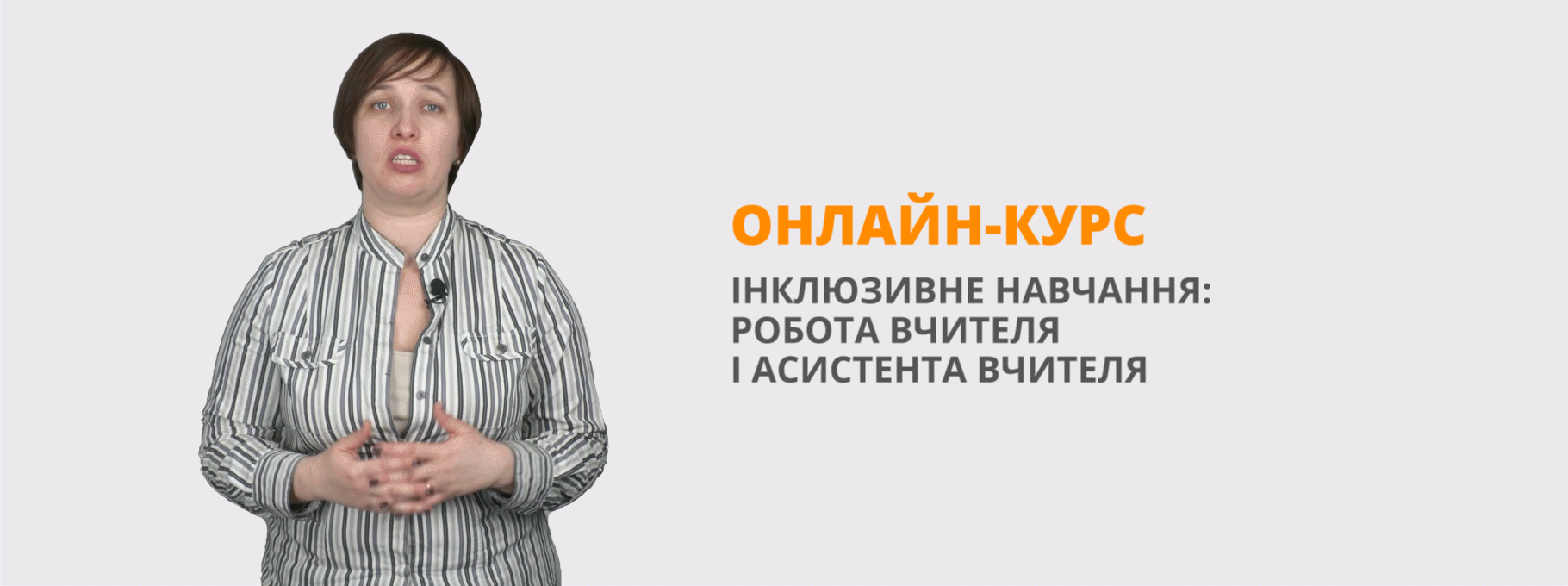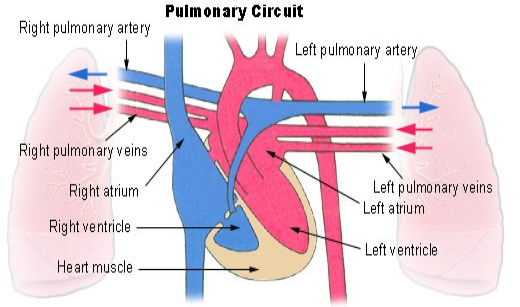Методична розробка з теми "Серцево-судинна система"
Міністерство охорони здоров'я України
Міністерство освіти і науки України
Кам'янець-Подільський медичний фаховий коледж
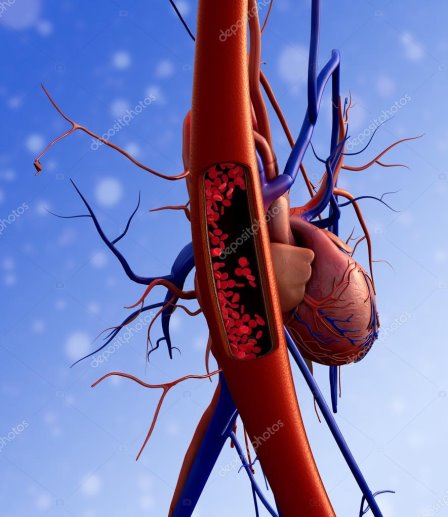

2018-2019 н.р.
Міністерство охорони здоров'я України
Міністерство освіти і науки України
Кам'янець-Подільський медичний фаховий коледж
ПОГОДЖУЮ ЗАТВЕРДЖУЮ
Методист коледжу Заступник директора
__________ А.В. Мельник з навчальної роботи
«___» __________ 2021 р. _________ Т.М. Мошак
« ___» _________ 2021 р.
Методична розробка заняття
Тема:

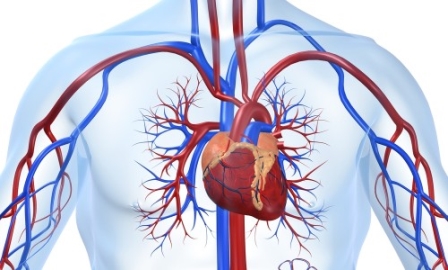
Дисципліна: «Англійська мова за професійним
спрямуванням»
Спеціальність: 223 Медсестринство Лікувальна справа
Курс: IV
Кількість годин: 2 год.
Викладач: А.В. Мельник
Розглянута на засіданні циклової комісії гуманітарних та соціально-економічних дисциплін
Протокол № 2 від «07» вересня 2021 р.
Голова циклової комісії __________А.М. Якубовська
(підпис)
2021/2022 н. р.
Рецензія
на методичну розробку заняття за методом проектів
з дисципліни «Англійська мова за професійним спрямуванням»
з теми: «Серцево-судинна система» для студентів ІV курсу
Спеціальність: 223 Медсестринство Лікувальна справа
Викладач: А.В. Мельник
Методична розробка заняття відповідає робочій освітній програмі з дисципліни «Англійська мова за професійним спрямуванням». Розроблена відповідно до вимог нормативних і навчально-методичних документів. Методична розробка відображає принципи послідовності та науковості викладеного матеріалу. В ній відмічено актуальність та доцільність теми заняття, фахові та загальні компетентності, міждисциплінарну інтеграцію. Зміст теми заняття подано у вигляді структурно-логічної схеми.
В плані та організаційній структурі заняття дотримано всіх сучасних етапів: підготовчого, основного та заключного. На кожний етап заняття відведено певний час. Представлено різноманітні матеріали методичного забезпечення до кожного з них: теоретичні питання, тестові завдання, ситуаційні задачі, завдання для роботи в малих групах, ілюстративний матеріал, відеоматеріали.
Список літератури представлений для студентів навчальною літературою (основною та додатковою), для викладача – нормативно-правовою, навчальною та методичною.
Висновки:
- Організаційно та методично розробка заняття складена відповідно до зразків нормативних і навчально-методичних матеріалів.
- Виконана у відповідності до діючої робочої освітньої програми, матеріал для студентів викладено доступно.
- Методична розробка може бути використана для проведення відкритого заняття з даної теми.
Рецензент – кандидат філологічних наук,
доцент, завідувач кафедри англійської мови
Кам′янець-Подільського національного
університету ім. І. Огієнка О.В. Галайбіда
І. Тема заняття: «Серцево-судинна система»
Дисципліна: Англійська мова за професійним спрямуванням
Спеціальність: 223 Медсестринство Лікувальна справа
Кількість годин: 2
ІІ. Результати навчання:
1. Фахові компетентності:
-
знання (knowledge) :
- здатність називати основну сучасну іншомовну фахову лексику;
- здатність називати функціональні особливості людського організму;
- здатність називати загальні поняття про захворювання серцево- судинної системи;
- здатність характеризувати будову та функції серцево-судинної системи;
- здатність описувати будову серця;
- здатність називати основні фізіологічні особливості роботи серця;
- здатність називати основні методи дослідження функцій серцево-судинної системи;
здатність описувати фазову структуру серцевого циклу;
здатність описувати основні зміни, що відбуваються при серцево-судинних захворюваннях;
- розуміння (understanding) :
- здатність пояснити особливості перекладу текстів фармацевтичної та медичної тематики;
- здатність здійснювати переклад фахових текстів;
- здатність з´ясовувати електрофізіологічні основи електрокардіографії;
здатність описувати фізіологічні механізми основних явищ у серці;
здатність пояснити основні закономірності і показники гемодинаміки, фактори які на них впливають;
здатність розкрити взаємозв’язок будови та функцій в організмі на прикладі серцево-судинної системи;
- застосування знань (application of knowledge) :
- здатність використовувати уміння визначати пізнавальну цінність тексту, виділяти ключові слова з теми;
- здатність розпізнавати та аналізувати граматичні явища і моделі, включати їх в активне спілкування;
- здатність читати спеціальні тексти загальної медичної тематики на основі володіння активним і пасивним лексичним мінімумом;
- здатність реалізувати засвоєний лексико-граматичний матеріал у формі усних та письмових повідомлень; вести дискурс на ситуативно зумовлену тематику;
- здатність демонструвати професійні знання у навчальних ситуаціях;
- здатність сприймати, розпізнавати та осмислювати інформацію у вигляді іншомовного повідомлення від співрозмовника та звукозапису в нормальному темпі;
- здатність демонструвати профілактику, діагностику та лікування
серцево-судинних захворювань;
- здатність ілюструвати реабілітаційні заходи при захворюваннях серцево-судинної системи;
- здатність розробляти та впроваджувати рекомендації з відновлення або компенсації захворювань серцево-судинної системи;
- здатність вести діалогічне та монологічне мовлення на рівні діалогу та висловлювання за темою;
- здатність пояснювати задачі за темою;
- аналіз (analysis) :
здатність досліджувати точки вислуховування тонів серця;
- здатність аналізувати здоровий спосіб життя;
- здатність аналізувати побічну дію серцево-судинних захворювань на організм людини;
- синтез (synthesis) :
здатність пояснити вікові зміни серцево-судинної системи;
- здатність класифікувати особливості гіпертонічної хвороби;
здатність аргументувати профілактику серцево-судинних захворювань;
- здатність ефективно співпрацювати під час різних видів робіт;
- здатність створювати усну та письмову презентацію іноземною мовою;
- оцінювання (evaluation) :
- здатність обирати навчальний матеріал під час виконання завдань самостійної роботи;
- здатність оцінювати різні види ускладнень при серцево-судинних захворюваннях;
- здатність оцінити результати надання допомоги при захворюваннях серцево-судинної системи;
- здатність передбачати можливі ускладнення у разі надання несвоєчасної допомоги хворим;
- здатність узагальнювати дані довідкової літератури;
- здатність поєднувати здобуті знання під час самоконтролю;
- здатність рекомендувати правила дотримання здорового способу життя;
- здатність оцінювати достовірність інформації на тематику дисципліни.
2. Загальні компетентності:
- здатність до абстрактного та логічного мислення;
- здатність поглиблювати та застосовувати знання у практичних ситуаціях;
- здатність вчитися і оволодівати сучасними знаннями;
- здатність бути критичним і самокритичним;
- здатність до адаптації та дії в новій ситуації;
- здатність виявляти вміння, ставити та вирішувати отримані завдання;
- здатність проявляти високу професійну відповідальність за кожну свою дію;
- здатність усвідомлено виявляти співчуття, чуйність, доброзичливість та уважне ставлення до пацієнтів кардіологічного профілю;
- здатність застосовувати комунікативні навички;
- здатність приймати обґрунтовані рішення;
- здатність працювати в команді та автономно;
- здатність діяти на основі етичних міркувань і мотивів;
- здатність діяти соціально, відповідально та свідомо;
- здатність продукувати нові ідеї;
- здатність планувати час та керувати ним;
- здатність діяти милосердно, з почуттям відповідальності за стан хворих;
- здатність користуватися дослідницькими прийомами: збір інформації, аналіз з різних точок зору, висування гіпотез, вміння роботи висновки;
- здатність оцінювати та підтримувати якість виконаної роботи.
After careful study of this theme students should be able to:
- describe the functions of the Cardiovascular System;
- list the functions of the blood;
- list the main ingredients in the plasma;
- name three elements of the blood;
- define blood type;
- explain the effect of blood type on transfusions;
- define anemia and leukemia;
- describe the tests used to study blood;
- define the location of the heart;
- name four chambers of the heart;
- name four valves;
- characterize the chambers of the heart;
- describe the muscular structure;
- classify heart diseases;
- name three types of vessels;
- compare the locations and functions of the pulmonary and systemic circuits;
- name the arteries of the systemic circuit;
- name the veins of the systemic circuit;
- explain the physiology of circulation;
- define pulse and blood pressure;
- list disorders of the blood vessels;
- describe approaches to the treatment of cardiovascular diseases.
ІІІ. Методи навчання:
1. Класичні:
- словесні: бесіда, діалог, дискусія, пояснення;
- наочні: ілюстрування, демонстрування, презентація;
- практичні: виконання вправ, формування здатності відтворювати отримані професійні компетентності через виконання ситуаційних завдань.
2. Інтерактивні:
- метод проектів;
- випереджувальний метод навчання;
- метод малих груп;
- метод «Прес»;
- метод «Падагогічне колесо» (Padagogy Wheel)
- метод «Дерево рішень»;
- таксономія Блума;
- рольові ігри;
- гра «Лови помилку»;
- мозковий штурм.
ІV. Методи контролю:
- фронтальне опитування;
- усний контроль (опитування методом незакінчене речення);
- тестовий контроль;
- рішення ситуаційних завдань;
- метод самоконтролю та самооцінки, взаємоконтроль.
V. Міждисциплінарна інтеграція:
|
Дисципліни |
Знати |
Вміти |
|
1. Попередні дисципліни |
||
|
Основи латинської мови з медичною термінологією
|
|
|
|
Внутрішня медицина |
|
|
|
Медична біологія |
|
|
|
Анатомія людини |
|
|
|
Фізіологія людини |
|
|
|
Загальний догляд за хворими та ММТ |
|
|
|
Фармакологія і медична рецептура |
|
|
|
Українська мова за професійним спрямуванням |
|
|
|
Основи загальної та медичної психології |
|
|
|
Етика та естетика |
|
|
|
2. Наступні дисципліни |
||
|
Невідкладні стани у внутрішній медицині |
|
|
|
Невідкладні стани в хірургії |
|
|
|
Анестезіологія та реаніматологія |
|
|
|
Внутрішньодисциплінарна інтеграція (між темами даної дисципліни)
|
||
|
Мовленнєвий етикет
Серцево-судинна система. Анатомічна, клінічна та фармацевтична термінологія
Захворювання нервової системи
У кардіологічному відділенні
Анотації до лікарських препаратів
Профілактична медицина
Людське тіло |
|
|
VІ. Література:
НОРМАТИВНО-ПРАВОВА:
1. Закон України від 03.07.2016 №5029 «Про засади державної мовної політики».
2. Указ президента України від 25 червня 2017 року №344/2013 «Про Національну стратегію розвитку освіти в Україні на період до 2021 року».
ОСНОВНА:
1. Саблук А.Г. Левандовська Л.В Англійська мова для студентів-медиків. – К.: ВСВ «Медицина», 2013. -317с.
2. Янков А. В. Англійська мова для студентів-медиків: анатомічна, клінічна і фармацевтична термінологія: підручник. – К.: Вища школа. 2004. - 260 с.
3. Соловйова Н.М, Михайлова-Бухуч Англійська мова для медичних сестер.–Чернівці: Медуніверситет, 2009.-321с.
4. Аврахова Л.Я Англійська мова для студентів-медиків. – К.: Атлант ЮЕмСі, 2018.-448с.
5. Аврахова Л.Я. Паламаренко І.О. Яхно Т.В. Англійська мова для фармацевтів: підручник. – К.: Атлант ЮЕмСі, 2017.-368с.
6. Захарчук І.Н. English HEALHT. – К.: Медицина, 2007.
7. Austin D. English for nurses – Англійська мова для медсестер: підручник. – К.: Медицина, 2009.-176с.
8. English for Medical Students = Англійська мова для студентів-медиків: підручник / Л.Я. Аврахова, I.О. Паламаренко, Т.В. Яхно / за ред. Л.Я. Аврахової. - 6-е вид. - К. : ВСВ «Медицина», 2018. — 448 с.
ДОДАТКОВА:
1. English for professional Purposes.-ВСВ «Медицина, 2018.-368с.
2. Барановська Т.В. Граматика англійської мови. - Логос України, 2017.
3. Гужва Т.Н Англійські розмовні теми. – Харків: Фоліо, 2016.
4. Захарчук І.О. Англйська мова для фармацевтів. – Тернопіль: Навчальна книга-Богдан, 2010.
5. Мансі Є.О. 100 розмовних тем з англійської мови. – К.: Арій, 2018.
6. Ривкін В.Л. Бенюмович М.С. Новий англо-український медичний словник. – К.:Арій, 2015.
7. Янсон В.В. Свистун Л.В. Богатирьов С.Т. Лежньов С.М. A Practical Guide for Learners of English/ Практичний курс англійської мови для студентів вищих навчальних закладів: навч. посіб. – К.: Логос, 2014.
8. Raymond Murphy Essential Grammar in Use. - Cambridge University Press, 2015.
9. Гузій Т. М. Використання інтерактивних технологій для розвитку професійного мовлення студентів у НВНЗ / Т. М. Гузій, Л. М. Гречок // Наукові записки. Серія «Філологічна». – 2017. – Випуск 11. – С. 469–473.
10. Першукова О. О. Модернізація навчання іноземних мов у Європейському освітньому просторі / О. О. Першукова // Порівняльно-педагогічні студії : Науково-педагогічний журнал. – № 1. – 2018. – С. 93–104.
11. Liz and John Soars New Headway Beginner Student`s Book. - Oxford University Press, 2017.
12. Toni Grice Nursing – Oxford University Press, 2017.
13. Sam McCarter Medicine. – Oxford University Press, 2016.
14. Sylvia S. Mader Human Biology. - University of New York at Bufallo. – Addison Wesley Publishing Company, 2016.
МЕТОДИЧНА:
1. Філоненко М.М. Методика викладання у вищій медичній школі на засадах компетентнісного підходу. - К.: «Центр учбової літератури», 2016.
2. Максименко С.Д. Педагогіка вищої медичної освіти. - К.: «Центр учбової літератури», 2014.
ЕЛЕКТРОННІ ДЖЕРЕЛА:
1. https://www.myvmc.com/anatomy/cardiovascular-system-heart/.
2. https://www.texasheart.org/heart-health/heart-information-center/top
3. https://www.britannica.com/science/human-cardiovascular-system
4. https://kidshealth.org/en/teens/heart.html
5. https://www.livescience.com/22486-circulatory-system.html
6. https://www.ncbi.nlm.nih.gov/books/NBK279250/
7. https://www.healthline.com/human-body-maps/circulatory-system
8. https://www.mayoclinic.org/diseases-conditions/heart-disease/multimedia/circulatory
9. https://www.bhf.org.uk/informationsupport/how-a-healthy-heart-worк
10. https://www.khanacademy.org/science/health-and-medicine/circulat.
11.https://www.mayoclinic.org/diseases-conditions/heart-disease/in-depth/heart-disease-prevention
12. https://www.nature.com/collections/cctckmlngd
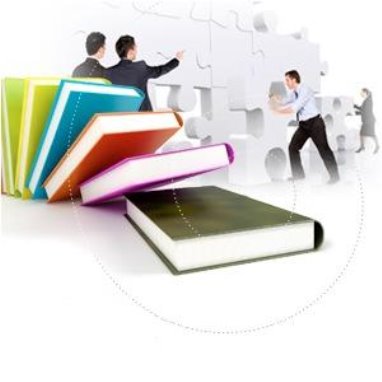

Матеріали методичного забезпечення підготовчого етапу заняття

 Epigraph: «Heart is a very delicate thing: it breaks»
Epigraph: «Heart is a very delicate thing: it breaks»
«Серце дуже крихка річ: воно б’ється»
Колетт
VІІ. Підготовчий етап (15´):
І. Мотивація освітньої діяльності
Welcome to our lesson. Today’s topic is the Cardiovascular System! This topic is actual now because cardiovascular diseases are the most common cause of death in Ukraine and in the world. Everyone must keep healthy way of life. This is a very exciting theme that will be very important to your future work as doctors. The cardiovascular system is a highly complex part of the human body. The heart is the hardest working muscle. It is always working, 24 hours a day, seven days a week - even while we are sleeping.
A healthy cardiovascular system is vital to supplying the body with oxygen and nutrients. Today we´ll learn the structure and function of the cardiovascular system. We are taking this approach in order to prepare you better for your future profession, where patients will come to you with clinical problems, which are not categorized by discipline names. The aim of the introduction is to help you understand the relevance of what you are about to learn, and to help you understand which aspects of the sciences you need to pay most attention to. The introduction will be a reflection of realistic clinical practice, but it is not expected to burden you with complex clinical concepts. For instance, the clinician may introduce a clinical situation related to Myocardial infarction (heart attack), and then highlight how an understanding of cardiovascular physiology and anatomy is required in order to deal with this clinical situation. This introduction will be re-enforced through the provision of a real life situation that further demonstrates to you, the relevance and importance of what you are about to learn.
«Heart is a very delicate thing : it breaks».
Today we are going to systematize your knowledge on the theme; to develop your listening skills; speaking abilities; to widen your outlook; to develop interest for your future profession.
Вітаємо на нашому занятті з теми: «Серцево-судинна система». Щороку в Україні від серцево-судинних захворювань помирає 160 тисяч осіб. Це більше ніж від сукупної кількості випадків смерті від всіх видів раку, туберкульозу, СНІДу. Не дивлячись на те що з кожним роком медики знаходять нові, більш ефективні способи боротьби із захворюваннями серцево-судинної системи, твердження про те, що краще не захворіти, ніж потім лікуватися, залишається актуальним. А для того, щоб не хворіти, необхідно зміцнювати серце і судини. Основне значення системи кровообігу полягає в постачанні кров'ю органів і тканин. Кров безперервно рухається судинами, що дає їй змогу виконувати всі життєво важливі функції, головною з яких є підтримка гомеостазу (тобто підтримка постійності складу внутрішнього середовища організму).
Система кровообігу складається з серця та судин, серце за рахунок своєї нагнітальної діяльності забезпечує рух крові по замкненій системі судин, головною функціональною одиницею яких є капіляри, вони здійснюють обмін речовин між кров'ю і тканинами. Від розвитку серця та судинного русла залежить стан загального здоров'я людини, виникнення хвороб серцево-судинної системи та їх перебіг. Відомо, що хвороби серцево-судинної системи, такі як природжені та набуті вади серця, ішемічна хвороба серця, інфаркт міокарда, гіпертонічна хвороба, атеросклероз судин, кровотечі та інші, посідають перше місце за тяжкими розладами здоров'я, розвитку інвалідності, а також смертності. Коли нам доводиться приймати складне рішення, ми нерідко кажемо, що «зробили цей вибір серцем».
Тому знання будови і функцій серця та кровоносних судин є необхідним та актуальним для практичної діяльності майбутніх медичних фахівців.
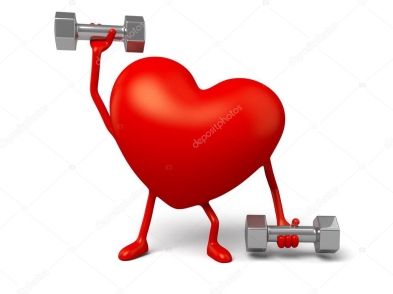
ІІ. Перевірка вхідного рівня знань
1. What expressions about heart do you know?
dear heart - любий, милий, душа моя (у звертанні)
to learn by heart - вчити напам'ять
to take heart - набиратися духу; триматися мужньо
to wear one's heart on one's sleeve - не відзначатися стриманістю
to have one's heart in one's boots - злякатися
to take words to heart - брати слова близько до серця
heart-to-heart conversation - щира, відверта розмова
2. Complete the sentences choosing the necessary word combinations.
A. The most numerous cells of blood are…
1) white blood corpuscles;
2) red blood corpuscles;
3) blood platelets.
B. Blood is …
1) a connective tissue;
2) a muscular tissue;
3) a fluid tissue.
C. The red blood cell count may change:
1) with respiration;
2) with age;
3) with air temperature.
D. The circulating volume of the blood depends on the changes:
1) of the ventricles;
2) of the air temperature;
3) of the atria.
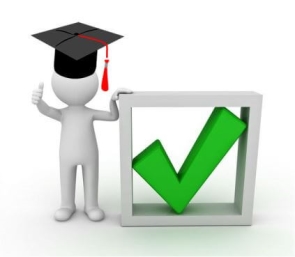 3. Control Tests
3. Control Tests
1. We check BP with
A. сardiogram
B. tonometer
C. stethoscope
D. fingers
E. palpation
2. The greater circulation begins with
A. the right heart
B. the left ventricle
C. the right atrium
D. the right ventricle
E. the left atrium
3. Between the right and left heart there is
A. an artery
B. a vessel
C. a septum
D. a valve
E. a wall
4. Between the chambers in the heart there are
A. valves
B. boxes
C. walls
D. septa
E. vessels
5. The heart has … chambers.
A. two
B. three
C. four
D. six
E. eight
6. Where isn’t the heart situated?
A. in the chest
B. in the left part of the thorax
C. in the right part of the thorax
D. above the diaphragm
E. between the lungs
7. What part doesn’t be long to the heart?
A. Chamber
B. Atrium
C. Valve
D. Stomach
E. Ventricle
8. How many blood circulations are there in the human body?
A. 3
B. 4
C. 5
D. 2
E. 6
9. What science studies the diseases of the heart and blood vessels?
A. Pathology
B. Biology
C. Cardiology
D. Genetics
E. Physiology
10. What valve is there between the left atrium and ventricle?
A. Tricuspid
B. Aortic
C. Venous
D. Mitral
E Arterious
11. How do we call the valve between the right atrium and ventricle?
A. Tricuspid
B. Aortic
C. Mitral
D. Venous
E. Arterious
12. How many ventricles does the human heart have?
A. 2
B. 3
C. 4
D. 1
E. No
13. The heart and blood vessels form the…
A. digestive system
B. nervous system
C. urinary system
D. cardiovascular system
C. endocrine system
14. Hypertension is the ...
A. low BP
B. high BP
C. atonia
D. dystonia
E. lack of vitamins
15. A red blood cell is
A. leukocyte
B. monocyte
C. phagocyte
D. erythrocyte
E. granulocyte
16. There are … groups of blood.
A. 2
B. 3
C. 4
D. 5
E. 6
17. The largest arterial vessel is ...
A. artery
B. vein
C. capillary
D. aorta
E. membrane
18. What medicine is used to prevent the formation of blood clots?
A. anticoagulant
B. digitalis
C. nitroglycerine
D. menthol
E. sedative
19. Leukocytes are … blood cells.
A. red
B. green
C. white
D. blue
E. yellow
20. The heart cycle is ...
A. tachycardia and bradycardia
B. tachycardia and hypotension
C. systole and diastole
D. tachypnea and dyspnea
E. spasm and relaxation
21. What is the universal group of blood?
A. 0
B. 1
C. 2
D. 3
E. 4
22. How do we call the person who gives his blood to another person?
A. recipient
B. patient
C. doctor
D. visitor
E. donor
23. What does hemopoiesis mean?
A. formation of blood
B. formation of cells
C. formation of urine
D. formation of energy
E. formation of lymph
24. What is the synonym of thrombocytus?
A. hemoglobin
B. protein
C. platelet
D. blood clotting
E. plasma
25. What doesn’t belong to the organs of the cardiovascular system?
A. spleen
B. heart
C. pancreas
D. liver
E. blood vessels
26. What is the role of valves in the heart?
A. to pump the blood from the heart
B. to prevent flow of blood into the atrium
C. to promote contractions of the heart
D. to promote relaxation of the heart
E. to make beatings of the heart
27. The middle, the thickest layer of the cardiac wall is …
A. pericardium
B. endocardium
C. cardiac membrane
D. cardiac sack
E. myocardium
28. What is the other name of the lesser blood circulation?
A. pulmonary
B. cardiac
C. gastric
D. cervical
E. thoracic
29. When the blood is given from one person to the other, it is …
A. presenting
B. injecting
C. suffering
D. transfusing
E. carrying
30. The science which studies the causes of diseases.
A. Etiology
B. Pathology
C. Psychology
D. Cardiology
E. Cytology
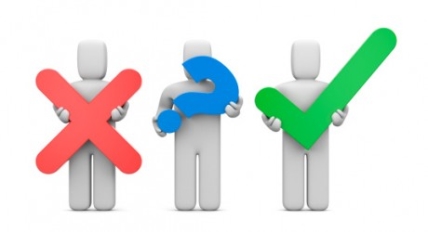

Матеріали методичного забезпечення основного етапу заняття

VIII. Основний етап (60′):
Отже, розпочинаємо захист проектів.
So, we are starting project protection.
Завдання для І-ї малої групи: to systematize material about your theme: «The heart, its work and our cardiovascular health».
The Cardiovascular System
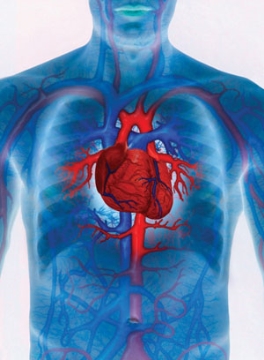
The cardiovascular system is a highly complex part of the human body. The engine, pump or driving force behind all of this is the heart. Measuring about 300g, and about the size of a fist, the heart is an incredibly powerful pump that not only has to pump blood around the body at high pressure, but also has to pump blood to the lungs under low pressure. It is this «double pressure» system that makes the cardiovascular system so effective.
It is a four-chamber pump, with the right side receiving deoxygenated blood from the body at low pressure and pumping it to the lungs (the pulmonary circulation) and the left side receiving oxygenated blood from the lungs and pumping it at high pressure around the body (the systemic circulation).
The atria make up the upper portion of the heart whilst the ventricles make up the lower portion. Oxygen poor blood returning to the heart collects in the right atria before moving forward into the right ventricle. As this ventricle contracts, blood is forced up under low pressure into the lungs via the pulmonary artery where waste products of metabolism such as carbon dioxide are released. Fresh oxygen is taken up by haemoglobin in the blood and transported back down to the left atria via the pulmonary veins. This oxygen rich blood is then moved into the left ventricle ready for ejection into the aorta for transportation around the entire body. The heart is therefore the pump responsible for maintaining adequate circulation of oxygenated blood around the vascular network of the body.
Our cardiovascular system consists of your:
- heart
- arteries, veins and capillaries (small blood vessels)
- blood
How does our cardiovascular system work?
Oxygen makes up about a fifth of the atmosphere. You breathe air through your mouth and nose and it travels to your lungs. Oxygen from the air is absorbed into your bloodstream through your lungs. Your heart then pumps oxygen-rich ('oxygenated') blood through a network of blood vessels - the arteries - to tissues including your organs, muscles and nerves, all around your body. When blood reaches your tissues, through the capillaries, it releases oxygen, which is used by cells to produce energy. In exchange, these cells release waste products, such as carbon dioxide and water, which are absorbed and carried away by your blood.
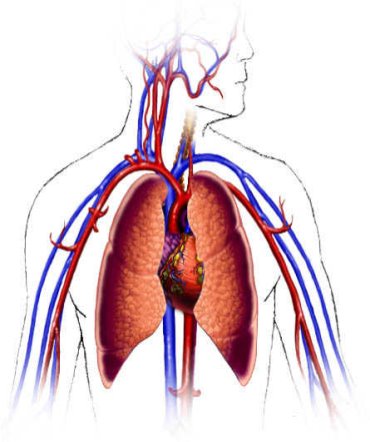 The used (or 'deoxygenated') blood then travels along your veins and back towards your heart. Your heart pumps the deoxygenated back to your lungs, where fresh oxygen is absorbed, and the cycle starts once again.
The used (or 'deoxygenated') blood then travels along your veins and back towards your heart. Your heart pumps the deoxygenated back to your lungs, where fresh oxygen is absorbed, and the cycle starts once again.
The heart
Your heart is roughly the size of a clenched fist and weighs about 300g. It lies in the centre of your chest, surrounded by a protective membrane called the pericardium. In an average day, your heart pumps the equivalent of nearly 22,750 litres (5,000 gallons) of blood around your body. Your heart is a muscular pump, divided into left and right sides, and its muscular walls squeeze (contract), pumping blood into the blood vessels and around your body.
The right side of your heart receives deoxygenated blood though the veins. This blood is pumped back to your lungs where it absorbs more oxygen. This oxygenated blood then returns to the left side of your heart, which pumps it out to the rest of your body through the arteries. The muscle on the left side of your heart is slightly larger because it has more work to do, pumping blood around your body. Each side of your heart is divided into an upper chamber called an atrium and a larger, lower chamber, called a ventricle. Blood flows from each atrium to the ventricle below, through a one-way valve.
Video «The Heart and Circulatory System»
Answers to questions about the cardiovascular system
This section contains answers to common questions about this topic. Questions have been suggested by health professionals, website feedback and requests via email.
- What sorts of exercises can I do to keep my heart healthy?
- I have diabetes and I have heard this can affect my heart. Do I need to take special precautions?
- Can too much stress in my life really cause heart disease?
What sorts of exercises can I do to keep my heart healthy?
You can improve the health of your heart (your cardiovascular fitness) through different types of physical activity or exercises.
Explanation
The best kind of exercise for your heart is aerobic activity - this means that it involves or improves the use of oxygen by your body. This is essential for improving your cardiovascular fitness. Aerobic activity can be any repetitive exercise that involves the large muscle groups of your legs, shoulders or arms.
Good forms of cardiovascular exercise include running, aerobics, cycling and swimming. It's important to realise that exercise can also include all kinds of day-to-day activities such as:
- gardening
- climbing stairs
- walking
-
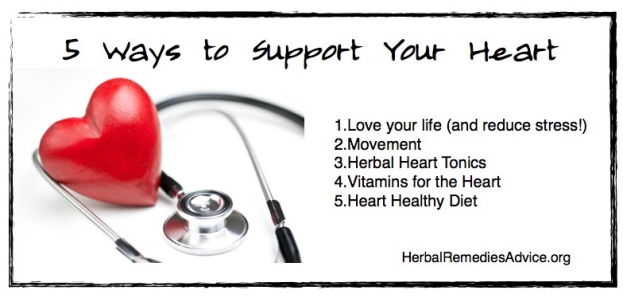 vacuuming
vacuuming
Always check with your GP before starting an exercise programme, especially if you have a condition for which you are taking prescribed medicines. He or she will be able to advise you on the best way to increase your physical activity.
Can too much stress in my life really cause heart disease?
Stress isn't the only cause of heart disease but when combined with other risk factors, such as smoking, lack of physical activity, and high blood cholesterol, it can act to increase your risk of developing it.
Explanation
Many people think that heart disease is caused by years of stress. However, there is no evidence to show that stress alone causes heart disease, even though stress can cause your blood pressure to increase. However, the way you try to cope with stress may increase your risk of developing heart disease. Stress can encourage less healthy behaviour, such as smoking, drinking too much alcohol, and over-eating. Sources of stress can include relationships, work, health, financial problems, and major events such as moving house, bereavement or divorce. A good way of identifying your sources of stress is to keep a diary and write in it when you are feeling stressed. This might help you to work out why you feel more stressed on some days than others. Once you have identified the possible causes of your stress, you can then take steps to tackle them and change how you respond to stressful situations. If you can't change a source of stress, aim to try and change your attitude towards it. Think about how you respond when you find yourself in a stressful situation. Then try and think about how you could change both your physical and mental response to it. A balanced diet and regular physical activity can help you to feel more ready to cope with potentially stressful situations. It's also important to learn how to relax - yoga and other relaxation techniques may help. Talking to friends, colleagues or family members about any worries you have can help. If you think you are stressed or very anxious, talk to your GP who will be able to help you decide on the best way to deal with it.
Communicative situation «At the Cardiologist′s»
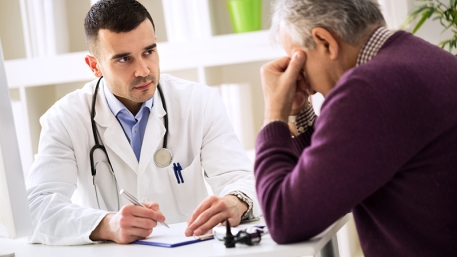
Arrhythmia (palpitations)
The heart
Your heart pumps oxygen-rich blood through a network of blood vessels (the arteries) to tissues including organs, muscles and nerves, all around your body.
The heartbeat
The normal electrical pattern of a heartbeat starts when electrical impulses are conducted to the top chambers of your heart (left atrium and right atrium - see illustration). This causes the atria to contract, pushing your blood into the two lower, larger, chambers (left ventricle and right ventricle - see illustration). The electrical impulse is then transmitted to the ventricles causing them to contract. This pushes the blood out of your heart to your lungs and the rest of your body.
Your heart will normally beat between 60 and 100 times a minute when you're resting. Examples of changes in your heart rate that don't usually cause problems include the following.
Sinus tachycardia
This is when your heartbeat is still regular, but faster than usual (more than 100 beats per minute). This is normal in certain situations, such as during exercise or if you have a fever, but may also occur at other times for no obvious reason. Conditions such as an overactive thyroid gland or anaemia may result in sinus tachycardia. Sinus bradycardia. This is when your heartbeat is still regular, but slower than usual (fewer than 60 beats per minute). Bradycardia is common in athletes but can occur if you're exposed to the cold and have a low body temperature or are feeling unwell.
Ectopic beats
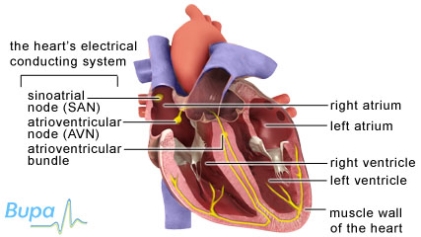 These are extra heartbeats and are very common - most people have one every 24 hours. You may feel an ectopic beat as a missed beat or a thump from your heart. They are most noticeable when you're resting. Ectopic beats aren't dangerous and won't damage your heart.
These are extra heartbeats and are very common - most people have one every 24 hours. You may feel an ectopic beat as a missed beat or a thump from your heart. They are most noticeable when you're resting. Ectopic beats aren't dangerous and won't damage your heart.
Types of arrhythmia
There are a number of different types of arrhythmia, including those listed below. Most arrhythmias that come from the top of the heart (supraventricular or atrial) may cause you to have symptoms but aren't life threatening. Arrhythmias that arise from the ventricles (ventricular) can be fatal.
Atrial fibrillation (AF)
AF occurs when the electrical impulses in the atria become disorganised, overriding the heart's normal rate and rhythm. This causes the atria to contract in an irregular manner or 'fibrillate'. You may notice that your heartbeat is irregular or feels uneven. Attacks of AF can last from a few seconds to days.
AF can lead to a blood clot forming in your heart. This is because your blood isn't able to flow properly through your heart. If a clot forms, it can travel to your brain and cause a stroke.
Supraventricular tachycardia (SVT)
Most SVTs are caused by the occurrence of an extra electrical pathway in the heart, between the atria and the ventricles. This allows electrical impulses to 'short-circuit' and re-enter the atria. The impulses end up travelling around the heart in a circle.
SVT can make your heart beat very quickly; up to 160 beats per minute. An attack of SVT may only last for a few seconds but it can last for several hours.
Ventricular tachycardia (VT)
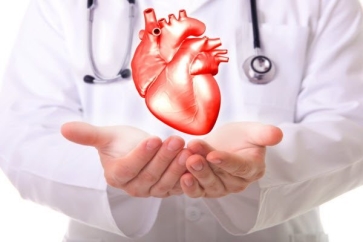 In VT, the electrical impulses fire too quickly from the ventricles, causing blood to be pumped out quicker than normal. The ventricles may not have enough time to fill up properly with blood.
In VT, the electrical impulses fire too quickly from the ventricles, causing blood to be pumped out quicker than normal. The ventricles may not have enough time to fill up properly with blood.
If the attack lasts for 30 seconds or more (sustained ventricular tachycardia), it can progress to a condition called ventricular fibrillation.
Ventricular fibrillation (VF)
In VF, electrical impulses start firing from multiple sites in the ventricles, very rapidly and in an irregular rhythm. This makes the heart quiver and unable to beat properly. If prompt treatment isn't given, you may have a cardiac arrest, which can be fatal. Someone who has ventricular fibrillation will lose their pulse, and will quickly become unconscious and stop breathing. You should call for emergency help immediately if you witness someone collapse and stop breathing. If the person is unconscious and isn't breathing normally, you should perform emergency resuscitation (cardiopulmonary resuscitation or CPR), but only if you know how.
Heart block
If you have heart block, it means there is a problem affecting how the electrical impulses are transmitted through your heart. Heart block can occur in the atrioventricular node or in the muscle fibres that lead into the ventricles (see illustration).
Symptoms of arrhythmias
With some types of arrhythmia you may not get any symptoms. If you do get symptoms, they will depend on the type and severity of your arrhythmia. Symptoms may include:
- palpitations - a palpitation is an unpleasant awareness of your heartbeat, often described as a thumping in your chest
- dizziness
- fainting or collapsing
- breathlessness
- chest pain
- fluid in your lungs (pulmonary oedema)
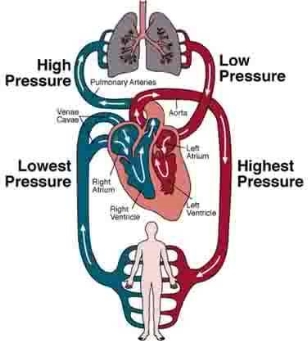 Rarely, some types of arrhythmia may result in sudden death.
Rarely, some types of arrhythmia may result in sudden death.
Causes of arrhythmias
An arrhythmia can be caused by conditions including:
- underlying heart disease
- heart valve problems
- thyroid disease
- high blood pressure
- Wolff-Parkinson-White syndrome - an electrical abnormality in the heart that can cause SVT and AF
- heart attack
- coronary artery disease
- inflammation of the heart
- pneumonia
Some types of arrhythmia may be caused by certain triggers. For example, certain medicines can cause heart block or SVT, alcohol can cause AF or SVT, caffeine and smoking tobacco or cannabis can cause SVT.
Sometimes there may be no known cause for an arrhythmia.
Diagnosis of arrhythmias
Your GP will ask you about your symptoms and examine you. He or she may also ask you about your medical history. If necessary, your GP will refer you to a cardiologist, a doctor specialising in identifying and treating conditions of the heart and blood vessels.
Your GP or cardiologist may do tests including:
- blood tests
- an ECG (electrocardiogram) - a test that measures the electrical activity of your heart to see how well it's working
-
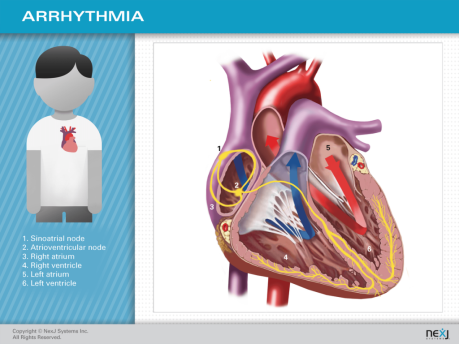 a 24-hour heart monitor (also known as an ambulatory ECG)
a 24-hour heart monitor (also known as an ambulatory ECG)
- an echocardiogram
You may have an electrophysiological study. A thin flexible tube (called an electrode catheter) is inserted into an artery or vein, usually in your groin, and threaded up to your heart. The catheter stimulates your heart and records the electrical impulses by doing an internal ECG.
Treatment of arrhythmias
Your treatment will depend on the type, cause and severity of your arrhythmia.
Self-help
Sometimes, such as with ectopic beats, all you may need is reassurance that your arrhythmia won't cause serious problems. You should steer clear of any triggers of your arrhythmia that you know about.
Medicines
Your doctor may prescribe medicines to help control your heart rhythm. These can include medicines to slow your heart rate, such as beta-blockers, or anti-arrhythmic drugs, such as amiodarone and flecainide. If you have AF, you may be advised to take blood-thinning medicines regularly, such as warfarin, to reduce your risk of blood clots forming.
How the heart works:
The heart is a large, hollow, muscular organ that pumps blood filled with oxygen and nutrients through the blood vessels to the body tissues. It is made up of:
-
four chambers (two atria and two ventricles) that receive blood from the body and pump out blood to it.
- The right and left atria receive blood coming back to the heart.
- The right and left ventricles pump the blood out of the heart.
- four valves to prevent backward flow of blood: the aortic, pulmonary, mitral, and tricuspid valves. Each valve has flaps, called leaflets, that allow the forward flow of blood and prevent the backward flow.
- blood vessels that bring blood to the lungs, where oxygen enters the bloodstream, and then to the body. The inferior and superior vena cava bring oxygen-poor (blue) blood from the body into the right atrium.
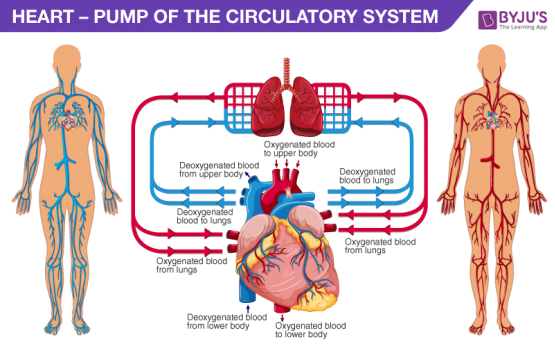
- The pulmonary artery channels oxygen-poor (blue) blood from the right ventricle into the lungs, where oxygen enters the bloodstream.
- The pulmonary veins bring oxygen-rich (red) blood to the left atrium.
- The aorta channels oxygen-rich (red) blood to the body.
- An electrical system controls how fast the heart beats.
A network of arteries and veins also carry blood throughout the body.
- Arteries transport blood from the heart to the body tissues.
- Veins carry blood back to the heart.
Video «Working of the Heart»
About the Heart and Blood Vessels
The heart is the hardest working muscle in the human body. Located almost in the center of the chest, the heart of a child is about the size of his/her fist. During an average lifetime, the human heart will beat more than three billion times - pumping an amount of blood that equals about one million barrels. The heart is always working, 24 hours a day, seven days a week - even while we are sleeping. A child's heart works just as hard as an adult's heart. In fact, a baby' s heart may beat up to 190 times a minute, while an adult's heart usually beats between 60 and 100 times a minute. The rate at which the heart pumps gradually slows down from birth to adolescence. Composed of the heart and blood vessels, the cardiovascular system is responsible for circulating blood throughout the body. A healthy cardiovascular system is vital to supplying the body with oxygen and nutrients.
Video «A month before a Heart Attack»
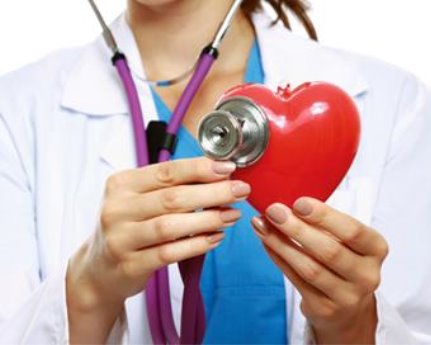
Завдання для ІІ-ї малої групи: to systematize material about your theme: «The Blood Vessels and circulation».
Circulatory system
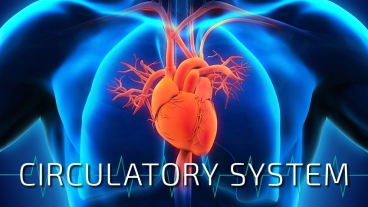 Also known as the cardiovascular system, the system that, in humans and other higher animals, delivers oxygen and nutrients throughout the body by a complex network of vessels – arteries, arterioles, capillaries, veins, and venules. Arteries, arterioles, and the microscopic capillaries carry blood away from the heart to all parts of the body and allow exchange of nutrients and wastes through capillary walls from blood to the tissues and organs. Veins carry deoxygenated blood back to the lungs for reoxygenation. If all the vessels of this network in an adult human body were laid end-to-end, they would extend for about 60,000 miles (more than 96,500 kilometers) – far enough to circle the Earth more than twice. As in the adult, survival of the developing embryo depends on the circulation of blood to maintain homeostasis and a favorable cellular environment. In response to this need, the circulatory system makes its appearance early in development and reaches a functional state long before any other major organ system. Incredible as it seems, the primitive heart begins to beat regularly early in the fourth week following fertilization.
Also known as the cardiovascular system, the system that, in humans and other higher animals, delivers oxygen and nutrients throughout the body by a complex network of vessels – arteries, arterioles, capillaries, veins, and venules. Arteries, arterioles, and the microscopic capillaries carry blood away from the heart to all parts of the body and allow exchange of nutrients and wastes through capillary walls from blood to the tissues and organs. Veins carry deoxygenated blood back to the lungs for reoxygenation. If all the vessels of this network in an adult human body were laid end-to-end, they would extend for about 60,000 miles (more than 96,500 kilometers) – far enough to circle the Earth more than twice. As in the adult, survival of the developing embryo depends on the circulation of blood to maintain homeostasis and a favorable cellular environment. In response to this need, the circulatory system makes its appearance early in development and reaches a functional state long before any other major organ system. Incredible as it seems, the primitive heart begins to beat regularly early in the fourth week following fertilization.
The vital role of the circulatory system in maintaining homeostasis depends on the continuous and controlled movement of blood through the thousands of miles of capillaries that permeate every tissue and reach every cell in the body. It is in the microscopic capillaries that blood performs its ultimate transport function. Nutrients and other essential materials pass from capillary blood into fluids surrounding the cells as waste products are removed. Numerous control mechanisms help to regulate and integrate the diverse functions and component parts of the cardiovascular system in order to supply blood to specific body areas according to need. These mechanisms ensure a constant internal environment surrounding each body cell regardless of differing demands for nutrients or production of waste products.
Video «Blood vessels»
Circulatory pathways
The blood vessels of the body are functionally divided into two distinctive circuits: pulmonary circuit and systemic circuit. The pump for the pulmonary circuit, which circulates blood through the lungs, is the right ventricle. The left ventricle is the pump for the systemic circuit, which provides the blood supply for the tissue cells of the body.
Pulmonary circuit
|
|
Pulmonary
Pulmonary circulation transports oxygen-poor blood from the right ventricle to the lungs where blood picks up a new blood supply. Then it returns the oxygen-rich blood to the left atrium.
Systemic Circuit
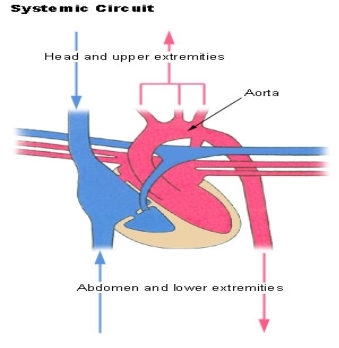
The systemic circulation provides the functional blood supply to all body tissue. It carries oxygen and nutrients to the cells and picks up carbon dioxide and waste products. Systemic circulation carries oxygenated blood from the left ventricle, through the arteries, to the capillaries in the tissues of the body. From the tissue capillaries, the deoxygenated blood returns through a system of veins to the right atrium of the heart. The coronary arteries are the only vessels that branch from the ascending aorta. The brachiocephalic, left common carotid, and left subclavian arteries branch from the aortic arch. Blood supply for the brain is provided by the internal carotid and vertebral arteries. The subclavian arteries provide the blood supply for the upper extremity. The celiac, superior mesenteric, suprarenal, renal, gonadal, and inferior mesenteric arteries branch from the abdominal aorta to supply the abdominal viscera. Lumbar arteries provide blood for the muscles and spinal cord. Branches of the external iliac artery provide the blood supply for the lower extremity. The internal iliac artery supplies the pelvic viscera.
Major systemic arteries
All systemic arteries are branches, either directly or indirectly, from the aorta. The aorta ascends from the left ventricle, curves posteriorly and to the left, then descends through the thorax and abdomen. This geography divides the aorta into three portions: ascending aorta, arotic arch, and descending aorta. The descending aorta is further subdivided into the thoracic arota and abdominal aorta.
Major systemic veins
After blood delivers oxygen to the tissues and picks up carbon dioxide, it returns to the heart through a system of veins. The capillaries, where the gaseous exchange occurs, merge into venules and these converge to form larger and larger veins until the blood reaches either the superior vena cava or inferior vena cava, which drain into the right atrium.
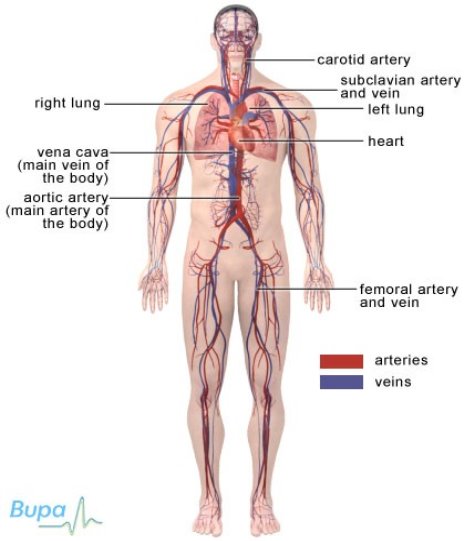 d osmotic pressu
d osmotic pressu
Role of the capillaries
In addition to forming the connection between the arteries and veins, capillaries have a vital role in the exchange of gases, nutrients, and metabolic waste products between the blood and the tissue cells. Substances pass through the capillaries wall by diffusion, filtration, and osmosis. Oxygen and carbon dioxide move across the capillary wall by diffusion. Fluid movement across a capillary wall is determined by a combination of hydrostatic and osmotic pressure. The net result of the capillary microcirculation created by hydrostatic and osmotic pressure is that substances leave the blood at one end of the capillary and return at the other end..
Video «Capillaries»
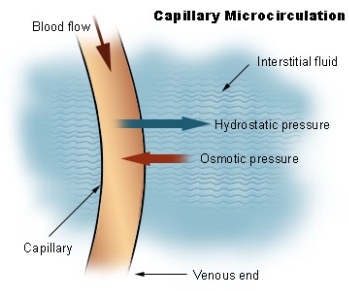 Blood flow
Blood flow
Blood flow refers to the movement of blood through the vessels from arteries to the capillaries and then into the veins. Pressure is a measure of the force that the blood exerts against the vessel walls as it moves the blood through the vessels. Like all fluids, blood flows from a high pressure area to a region with lower pressure. Blood flows in the same direction as the decreasing pressure gradient: arteries to capillaries to veins.
The rate, or velocity, of blood flow varies inversely with the total cross-sectional area of the blood vessels. As the total cross-sectional area of the vessels increases, the velocity of flow decreases. Blood flow is slowest in the capillaries, which allows time for exchange of gases and nutrients.
Resistance is a force that opposes the flow of a fluid. In blood vessels, most of the resistance is due to vessel diameter. As vessel diameter decreases, the resistance increases and blood flow decreases.
Very little pressure remains by the time blood leaves the capillaries and enters the venules. Blood flow through the veins is not the direct result of ventricular contraction. Instead, venous return depends on skeletal muscle action, respiratory movements, and constriction of smooth muscle in venous walls.
Pulse and blood pressure
Pulse refers to the rhythmic expansion of an artery that is caused by ejection of blood from the ventricle. It can be felt where an artery is close to the surface and rests on something firm. In common usage, the term blood pressure refers to arterial blood pressure, the pressure in the aorta and its branches. Systolic pressure is due to ventricular contraction. Diastolic pressure occurs during cardiac relaxation. Pulse pressure is the difference between systolic pressure and diastolic pressure. Blood pressure is measured with a sphygmomanometer and is recorded as the systolic pressure over the diastolic pressure. Four major factors interact to affect blood pressure: cardiac output, blood volume, peripheral resistance, and viscosity. When these factors increase, blood pressure also increases. Arterial blood pressure is maintained within normal ranges by changes in cardiac output and peripheral resistance. Pressure receptors (barareceptors), located in the walls of the large arteries in the thorax and neck, are important for short-term blood pressure regulation.
Video «BP Heart Disease and risk factors»
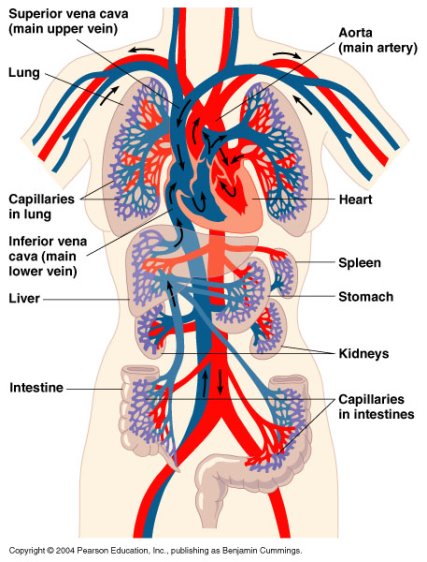
The main organs, arteries and veins in the cardiovascular system
The lungs
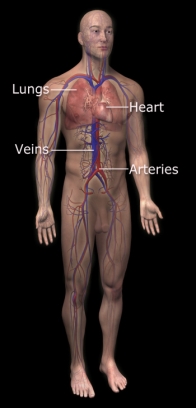 Your lungs are positioned on either side of your heart in your chest cavity (thorax) and consist of spongy tissue with a rich blood supply.Your diaphragm is a sheet of muscle that separates your chest from your abdominal cavity and forms the floor of your thorax. Movement of your diaphragm as you breathe in causes your lungs to inflate. Air passes from your nose and mouth into the trachea (windpipe) and into each lung, through two airways called the bronchi. These divide into smaller airways, called bronchioles, which repeatedly divide and end in tiny sacs called alveoli. These are air sacs with walls just one cell thick. It's here that oxygen and carbon dioxide filters into and out of your blood. In this process, known as gaseous exchange, molecules of oxygen and carbon dioxide bind to the haemoglobin, a protein in your red blood cells. There are about seven million alveoli in your lungs, which provide a vast surface area for gaseous exchange - around the size of a tennis court if it could be spread out. In an average day, 10,000 litres of air can move in and out of your lungs.
Your lungs are positioned on either side of your heart in your chest cavity (thorax) and consist of spongy tissue with a rich blood supply.Your diaphragm is a sheet of muscle that separates your chest from your abdominal cavity and forms the floor of your thorax. Movement of your diaphragm as you breathe in causes your lungs to inflate. Air passes from your nose and mouth into the trachea (windpipe) and into each lung, through two airways called the bronchi. These divide into smaller airways, called bronchioles, which repeatedly divide and end in tiny sacs called alveoli. These are air sacs with walls just one cell thick. It's here that oxygen and carbon dioxide filters into and out of your blood. In this process, known as gaseous exchange, molecules of oxygen and carbon dioxide bind to the haemoglobin, a protein in your red blood cells. There are about seven million alveoli in your lungs, which provide a vast surface area for gaseous exchange - around the size of a tennis court if it could be spread out. In an average day, 10,000 litres of air can move in and out of your lungs.
Blood pressure
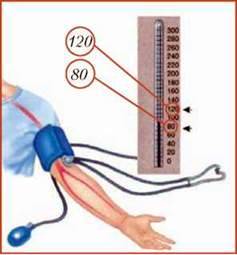 Blood carrying oxygen and nutrients is pumped around your body by your heart. As a result of this pumping action and the size and flexibility of your arteries that carry blood, the blood is under pressure. This blood pressure is an essential and normal part of the way your body works.
Blood carrying oxygen and nutrients is pumped around your body by your heart. As a result of this pumping action and the size and flexibility of your arteries that carry blood, the blood is under pressure. This blood pressure is an essential and normal part of the way your body works.
When blood pressure is measured, the result is expressed as two numbers, such as 120/80mmHg ("one hundred and twenty over eighty millimetres of mercury"). The first figure - the systolic blood pressure - is a measure of the pressure when your heart muscle is contracted and pumping blood. This is the maximum pressure in your blood system. The second figure - the diastolic blood pressure - is the pressure between heart beats when your heart is resting and filling with blood. This is the minimum pressure in your blood system. Your blood pressure should ideally be around 120/80mmHg. If you have diabetes, ideally your blood pressure should be less than 130/80mmHg.
Video «Don′t ignore diastolic BP»
The cardiovascular system (cardio = related to the heart, vascular = related to blood vessels) is composed of heart, blood vessels and the cells and plasma that constitutes the blood. It maintains the circulation of life giving blood to all parts of our body which is necessary for delivery of nutrients, removal of wastes and exchange of oxygen and carbon dioxide.
Our Heart
It is the most important part of the cardiovascular system. It is a muscular organ located in the chest between the two lungs, slightly to the left. It is well protected by the rib cage. It pumps blood to the various parts of our body by repeated rhythmic contractions. It beats 72 times in a minute. It has four chambers – 2 upper chambers known as atria and 2 lower ones known as ventricles. The atria receive blood and the ventricles pump blood to the various parts of our body and the lungs.
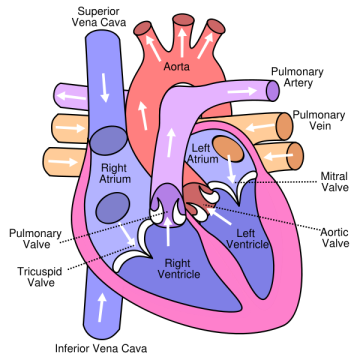 Blood vessels
Blood vessels
Blood vessels are the tubes that carry the blood. They are of 3 types:
- Arteries – carry blood from the heart to different parts of our body
- Veins – carry blood from the different parts of our body back to our heart
- Cappilaries – small, thin walled vessels that form a network between the arteries and veins in the tissues and function in the exchange of nutrilents and gases.
Blood
Blood is a specialised body fluid that flows through the blood vessels. It derives its red colour from the presence of the pigment hemoglobin in the red blood cells – which is responsible for the transport of oxygen and carbondioxide. Blood is composed of the fluid part known as plasma and blood cells. Plasma is mostly made up of water and also contains proteins, salts and other substances. The blood cells are of 3 types – Red blood cells (responsible for the transport of respiratory gases), White blood cells (responsible for immunity against diseases) and platelets (responsible for blood clotting.)
Systemic Circulation and Pulmonary Circulation
These are two divisions of the cardiovascular system. Systemic circulation is concerned with the delivery of oxygenated blood to the various parts of our body. Here the blood from the left ventricle is pumped to the various parts of the body through the aorta. After circulating through the body, the blood reaches the right atrium through the superior and inferior vena cava.
Pulmonary circulation is concerned with the oxygenation of blood in the lungs. The blood from the right ventricle is pumped to the lungs via the pulmonary artery where it gets oxygenated and it reaches the left atrium via the four pulmonary veins.
Video «Cardiovascular System. Heart and Blood Vessels»
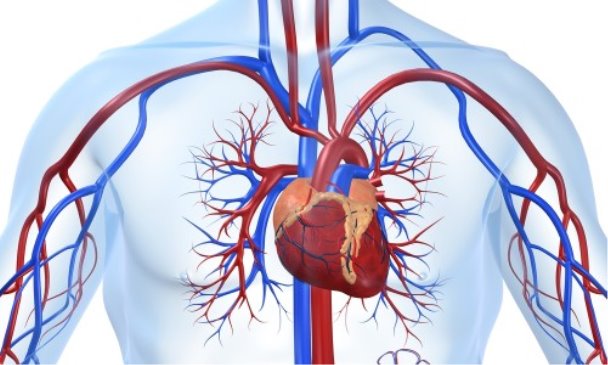
Завдання для ІІІ-ї малої групи: to systematize material about your theme: «How to prevent heart disease?».
Heart Health: Conversation starters
It can be hard to talk to a family member or friend about making healthy lifestyle changes. Use these tips to start a conversation about heart-healthy changes like quitting smoking or getting more physical activity.
Begin by saying that you care you can say:
- «I want you to live a long and healthy life».
- «I hope you’ll be around for a long time».
- «I want to help you make healthy changes so you can keep enjoying the things you love to do».
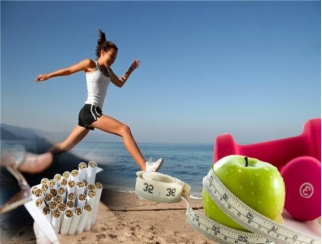 Share the facts.
Share the facts.
Let your love done know how serious heart disease can be:
- «Heart disease is the leading cause of death for both men and women in the Uкraine».
- «Heart disease causes more deaths in the Ukraine than all types of cancer combined».
Explain that it's possible to prevent heart disease.
Make it clear that taking these steps can improve heart health:
- Quit smoking and stay away from secondhand smoke.
- Control your cholesterol and blood pressure.
- If you choose to drink alcohol, limit your drinking to no more than 1 drink a day for women and no more than 2 drinks a day for men.
- Eat healthy. Get plenty of fruits, vegetables, whole grains, and fat-free or low-fat dairy products. Limit saturated and trans fats, added sugars and sodium (salt).
- Get active. Aim for 2 hours and 30 minutes of moderate aerobica ativity every week.
- Stay at a healthy weight. If you are over weight or obese, losing just 10 pounds can lower your risk of heart disease.
Video «5 common signs of Heart Disease»
Keep Your Heart Healthy
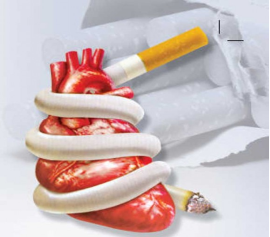 Every one is at risk for heart disease. But you are at higher risk for heart disease if you:
Every one is at risk for heart disease. But you are at higher risk for heart disease if you:
- Have high cholesterol or high blood pressure.
- Smoke.
- Are over weight or obese.
- Don't get enough physical activity.
- Don't eat a healthy diet.
Your age and family history also affect your risk for heart disease. Your risk is higher if:
- You are a woman over age 55.
- You are a man over age 45.
- Your father or brother had heart disease before age 55.
-
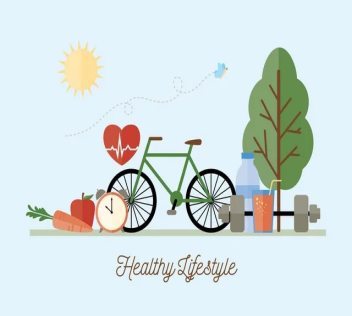 Your mother or sister had heart disease before age 65.
Your mother or sister had heart disease before age 65.
But the good news is there's a lot you can do to prevent heart disease.
Video «What happens during a Heart Attack?»

Матеріали методичного забезпечення
заключного етапу заняття

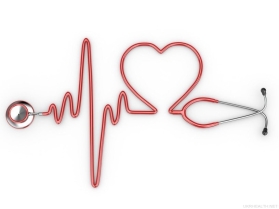 ІХ. Заключний етап (15´) :
ІХ. Заключний етап (15´) :
1. Завдання для самостійної роботи І-ої малої групи:
Real life situation 1
You are a fourth year medical students. One evening, your friend from next flat, who is also a fourth year medical student, rushes to your home saying that his father is ill. He asks you to come and help. You find that your friend’s father is complaining of a severe chest pain. You also notice that he is sweating, and he complains that he feels «vomitish», numbness of neck occur, shortness of breath, fever and even fainting. Chest pain is constant that comes sudden and it is severe. The duration of pain is usually more than 30 minutes. Abdominal pain associated with nausea and vomiting. Man also has dyspnea, weakness, blood pressure low, pulse imperceptible and rapid. What can you say about the diagnosis?
You and your friend are unsure of what to do, but from what you have heard, you feel that the patient needs immediate medical attention. You calm the patient, and arrange for him to be transported to the hospital. The patient receives immediate treatment and undergoes a number of investigations. After a few days, your friend comes over to thank you, and says that the diagnosis card indicated that his father had a «myocardial infarction».
TREATMENT Some of the medical management used in this case are as follows: Inhalation of Oxygen, antiarrhythmic drugs, in severe cases administer Morphine sulphate and diazepam as required, Heparin to prevent from thromboembolism but it is not necessary for mild case, pain relief (Nitro-glycerin for active pain), prevention and treatment of any complications that may arise, Immediate administration of aspirin and physical activities should be limited.
Завдання для самостійної роботи ІІ-ої малої групи:
Real life situation 2
Your uncle is thrilled to hear that you have entered the medical faculty. He comes to you and says that now he can depend on you to measure his blood pressure regularly, and provide necessary advice. He also said, that last time he drinking too much alcohol, eating a lot of salt, smoking and having diabetes. He has high blood pressure, sometimes greater than 140 over 80.You reluctantly tell him that you are only a fourth year medical student, and advice him to continue visiting his regular doctor, but promise to start helping him as soon as possible. What can you say about the diagnosis?
We find out that it is «the silent killer» (Hypertension)
We recommend patient lifestyle modifications. These include: starting the diet, which is high in fruit, vegetables, fiber and low in saturated fat and sodium; exercising for at least 30 minutes a day, three times a week; and restricting alcohol. He also must walking, jogging, cycling, or swimming on 5 to 7 days of the week. Avoiding stress.
TREATMENT Some of the most common types of blood pressure medications include:
- Diuretics: These medications remove some salt from the body, which reduces fluid in the blood vessels and causes blood pressure to go down.
- Beta-blockers: Allow the heart to beat slower, with less force, which results in lower blood pressure.
- Angiotensin-converting enzyme inhibitors: Blocks the formation of a hormone that narrows blood vessels, allowing blood vessels to open up.
- Angiotensin II receptor blockers (ARBs): These medications are newer, but work in a way similar to ACE inhibitors to widen blood vessels.
- Calcium channel blockers: Stop calcium from entering muscle cells in the heart and blood vessels, which relaxes the blood vessels.
Завдання для самостійної роботи ІІІ-ої малої групи:
Real life situation 3
You are a paramedic. On your way to the hospital you see a group of people calling for help. When you go to the spot you see a middle aged man lying on the road with a stab injury on the left lower aspect of the chest. There is bleeding from the wound. Man also had shallow, rapid breathing and heartbeat, confusion and disorientation. After a few minutes you check his pulse and blood pressure. His blood pressure was 90/60mmHg and pulse rate was 120 beats/min. What can you say about the diagnosis?
We think it is «shock». First aid management includes:
- If the person is conscious, lie them down and keep them warm and comfortable. Loosen their clothing. If possible, raise their legs above the level of their torso and head (to improve blood flow to the brain, heart and lungs). Do not raise their legs if you suspect a spinal injury or if moving their legs causes pain.
- Manage any obvious signs of external bleeding. For example, firmly press a clean cloth or pad against a wound to stop blood loss. If blood seeps through and soaks the cloth, do not remove it. Add another cloth or pad over the top of the first one. Continue maintaining firm pressure against the wound. Do not give the person anything to eat or drink.
- Stay with the person until the ambulance arrives. However, we also determined that it is Hypovolaemic shock – stopping the bleeding and boosting the person’s blood volume with intravenous fluids (fluids given directly into the person’s bloodstream through a tube and needle). In severe cases, the person may need a blood transfusion. Internal or external wounds may need surgery.
2. Read and memorize these interesting facts.
Do you know that:
1) each erythrosyte lives 120-130 days?
2) each leukocyte lives 4-7 days?
3) every day 200,000,000 erythrocytes are born and the same number dies?
3. Read the sentences and say what they are about.
1. These corpusles have great elasticity and flexibility. These features give them the possibility to pass through very small capillaries (red corpusles).
2. The count of these corpusles in the blood of a healthy person is from 5000 to 7000 per cubic millimeter. The number of these corpuscles increases when a person becomes ill (leukocytes).
4. Determine the terms and names its Latin and English equivalents.
|
Ukrainian |
Latin |
English |
|
|
Артерія – кровоносна судина, якою тече артеріальна кров |
Arteria |
Artery |
|
|
Вена – венозна судина, якою тече венозна кров |
Vena |
Vein |
|
|
Циркуляція – рух крові судинами |
Circulatio |
Circulation |
|
|
Клапан – стулки, які з’єднують передсердя зі шлуночками, або шлуночки з магістральними судинами |
Valvaе |
Valve |
|
|
Передсердя – верхня камера серця |
Atrium |
Atrium |
|
|
Шлуночок – нижня камера серця |
Ventriculus |
Ventricle |
|
|
Капіляр – найменша кровоносна судина
|
Capillus |
Capillary |
|
5. Read the sentences and mark right or wrong statements.
- Your heart is a wonderful organ that works during every minutes of your life.
- The heart is frequently referred to as a pump.
- Physiologists have determined that in the adult the heart makes from 80 to 90 beats per minutes.
- Take your pulse and in such a way you can control the work of your head.
- About 7 litres of blood feel our arteries, veins and capillaries.
- Arteries carry blood from the heart.
- Veins carry blood to the heart.
- Blood has red blood cells, white blood cells and plasma.
- Ten tons of blood are pumped through the heart daily.
- The human heart begins to beat and pump blood quicker than usual during the emotional stress.
Answers:
- +; 2. +; 3. - ;4. - ;5. - ; 6. +; 7. +; 8. +; 9. +; 10. +;
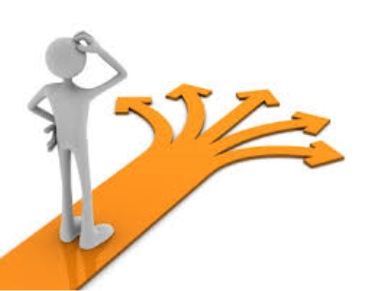
Х. Самооцінювання
Я оцінюю мою роботу в групі
Name..............................................................
Date.................................................................
Members of my group.....................................
I listened when other told.
I proposed my ideas.
I asked others about their ideas.
I divided of my equipment.
I asked my collaborators about help when I need it.
I helped somebody in my group.
I told others that I like their ideas.
ХІ. Домашнє завдання
To systematize your knowledge about Cardiovascular System ad learn new words and expressions.
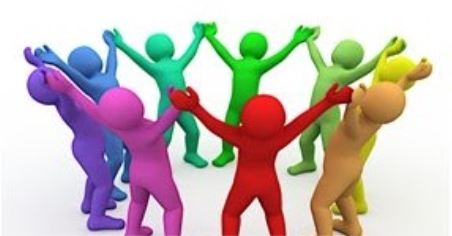
Критерії оцінювання освітньої діяльності студента
- Оцінювання за 5- бальною шкалою
|
Критерії оцінювання |
Оцінка за національною шкалою |
|
|
Студент виявляє особливі творчі здібності, вміє самостійно здобувати знання, без допомоги викладача знаходить та опрацьовує необхідну інформацію, вміє використовувати набуті знання і вміння для прийняття рішень у нестандартних ситуаціях, переконливо аргументує відповіді, самостійно розкриває власні обдарування і нахили |
Високий (творчий) |
|
|
Студент вільно володіє вивченим обсягом матеріалу, застосовує його на практиці, вільно розв’язує вправи і задачі у стандартних ситуаціях, самостійно виправляє допущені помилки, кількість яких незначна |
Достатній (конструктивно- варіативний) |
|
|
Студент вміє зіставляти, узагальнювати, систематизувати інформацію під керівництвом викладача; в цілому самостійно застосовувати її на практиці; контролювати власну діяльність; виправляти помилки, серед яких є суттєві, добирати аргументи для підтвердження думок |
||
|
Студент відтворює значну частину теоретичного матеріалу, виявляє знання і розуміння основних положень; з допомогою викладача може аналізувати навчальний матеріал, виправляти помилки, серед яких є значна кількість суттєвих |
Середній (репродуктивний) |
|
|
Студент володіє навчальним матеріалом на рівні, вищому за початковий, значну частину його відтворює на репродуктивному рівні |
||
|
Студент володіє матеріалом на рівні окремих фрагментів, що становлять незначну частину навчального матеріалу Студент володіє матеріалом на рівні елементарного розпізнання і відтворення окремих фактів, елементів, об’єктів |
Низький (рецептивно-продуктивний) з можливістю повторного складання семестрового контролю |
|


про публікацію авторської розробки
Додати розробку
